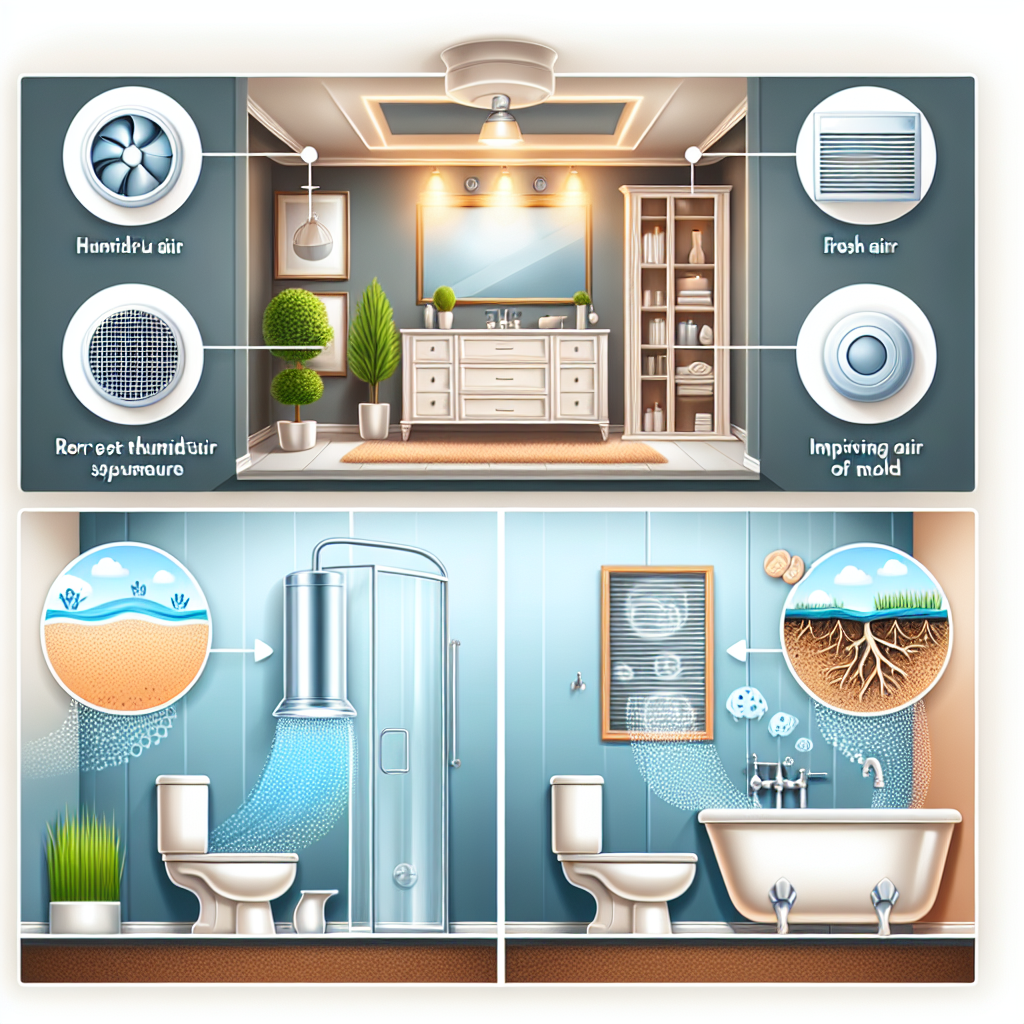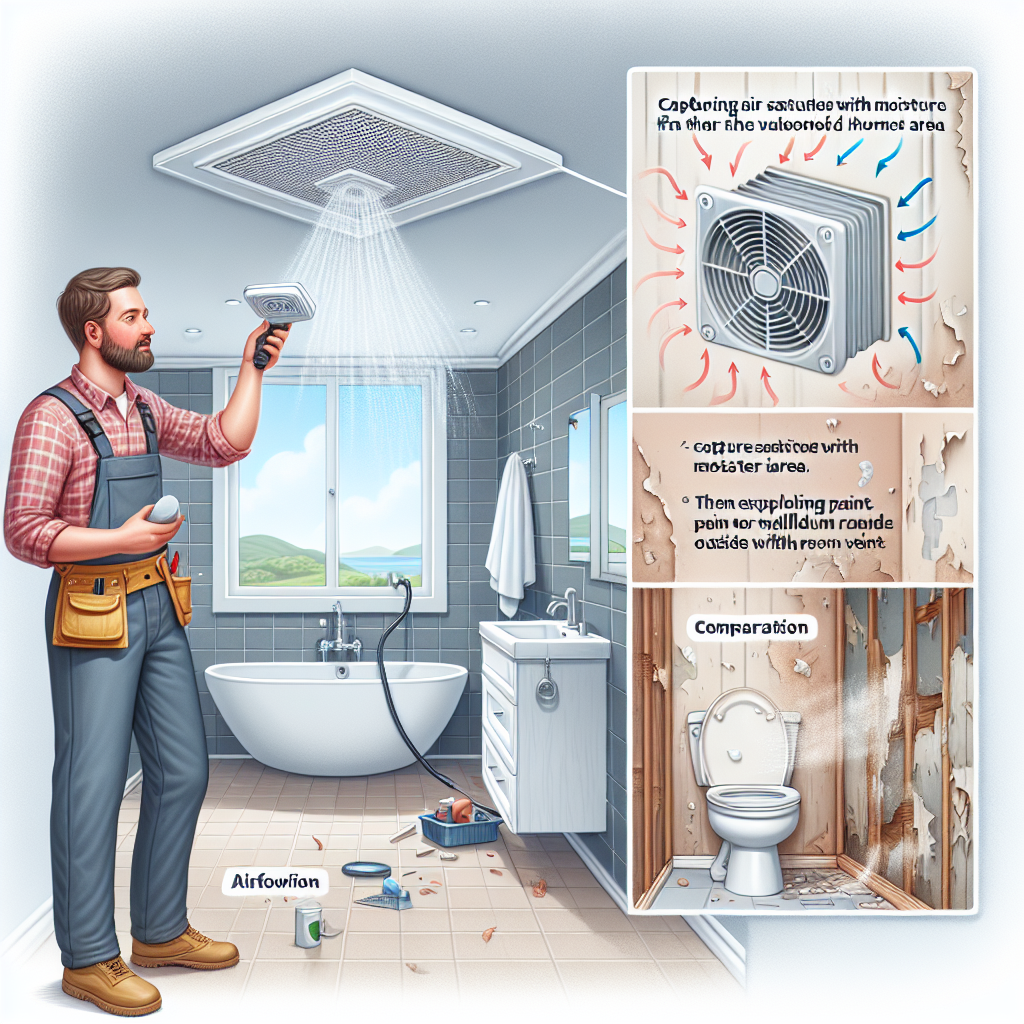The Importance of Bathroom Ventilation Systems

Bathroom ventilation systems play a crucial role in maintaining a healthy and comfortable environment in our homes. While often overlooked, these systems are essential for removing excess moisture, odors, and pollutants from the bathroom. In this article, we will explore the importance of bathroom ventilation systems, their benefits, and how they contribute to a healthier living space.
Why Do You Need a Bathroom Ventilation System?
1.
Moisture Control
One of the primary reasons for having a bathroom ventilation system is to control moisture levels. Bathrooms are high-moisture areas due to activities like showering, bathing, and handwashing. Without proper ventilation, excess moisture can accumulate on surfaces, leading to mold and mildew growth. These fungi not only damage the bathroom but also pose health risks to occupants.
A well-functioning ventilation system helps to remove moisture from the air, preventing condensation on walls, mirrors, and windows. It also reduces the chances of mold growth, which can cause respiratory problems, allergies, and other health issues.
2.
Odor Elimination
Bathrooms are notorious for unpleasant odors. A ventilation system helps to eliminate these odors by extracting them from the room and expelling them outside. By removing odors, the system ensures a fresh and inviting bathroom environment for both residents and guests.
Additionally, a properly ventilated bathroom can help maintain privacy by quickly removing any embarrassing odors, ensuring a more comfortable experience for everyone in the household.
3.
Air Quality Improvement
Bathrooms can harbor various pollutants, including volatile organic compounds (VOCs) from cleaning products, aerosol sprays, and even personal care items. These pollutants can have adverse effects on indoor air quality and contribute to respiratory problems, allergies, and other health issues.
A bathroom ventilation system helps to remove these pollutants, ensuring cleaner and healthier air in the bathroom. By expelling the contaminated air outside and bringing in fresh air, the system helps maintain a safe and comfortable environment for occupants.
4.
Prevention of Structural Damage
Excess moisture in the bathroom can lead to structural damage over time. When moisture accumulates on surfaces, it can seep into walls, ceilings, and floors, causing rot, decay, and even structural instability. These issues can be costly to repair and may require extensive renovations.
A well-designed ventilation system helps to prevent such damage by removing moisture from the bathroom, reducing the risk of structural problems. By controlling humidity levels, the system helps to preserve the integrity of the building materials and prolong the lifespan of the bathroom.
The Types of Bathroom Ventilation Systems
There are several types of bathroom ventilation systems available, each with its own advantages and considerations. Here are some common options:
1.
Exhaust Fans
Exhaust fans are the most common type of bathroom ventilation system. They work by drawing air from the bathroom and expelling it outside through a duct. These fans are typically installed on the ceiling or wall and can be operated manually or automatically.
Exhaust fans are effective at removing moisture, odors, and pollutants from the bathroom. They come in various sizes and airflow capacities, allowing you to choose the right fan based on the size of your bathroom and the level of ventilation required.
2.
Heat Recovery Ventilators (HRVs)
Heat recovery ventilators, or HRVs, are more advanced ventilation systems that not only remove moisture and odors but also recover heat from the expelled air. HRVs work by exchanging heat between the outgoing and incoming air streams, helping to maintain energy efficiency in the home.
These systems are particularly beneficial in colder climates where heat loss can be a concern. By recovering heat from the bathroom air, HRVs help to reduce energy consumption and lower heating costs.
3.
Window Ventilation
Window ventilation is a simple and cost-effective option for bathroom ventilation. It involves opening a window during or after using the bathroom to allow fresh air to enter and stale air to exit. While this method can be effective, it may not be suitable for all bathrooms, especially those without windows or in high-rise buildings.
Window ventilation can be a temporary solution or used in conjunction with other ventilation systems to enhance airflow and improve air quality.
Factors to Consider When Choosing a Bathroom Ventilation System
When selecting a bathroom ventilation system, there are several factors to consider:
1.
Bathroom Size
The size of your bathroom will determine the airflow capacity required for an effective ventilation system. Larger bathrooms may need more powerful fans or multiple exhaust fans to ensure adequate ventilation.
2.
Noise Level
Some ventilation systems can be noisy, which can be a concern, especially if the bathroom is located near bedrooms or living areas. Look for models with low noise ratings to ensure a quieter and more peaceful bathroom environment.
3.
Energy Efficiency
Consider the energy efficiency of the ventilation system, especially if you are concerned about your environmental footprint and energy costs. Look for systems with energy-efficient features, such as low power consumption and heat recovery capabilities.
4.
Maintenance Requirements
Regular maintenance is essential to keep your ventilation system functioning optimally. Consider the maintenance requirements of different systems and choose one that is easy to clean and maintain.
Frequently Asked Questions about “Importance of Bathroom Ventilation Systems”
1.
How often should I run my bathroom ventilation system?
It is recommended to run your bathroom ventilation system during and after every shower or bath, as well as when using cleaning products or aerosol sprays. This helps to remove excess moisture and odors from the bathroom, maintaining a healthier environment.
2.
Can a bathroom ventilation system help prevent mold growth?
Yes, a properly functioning bathroom ventilation system can help prevent mold growth by removing excess moisture from the air. Mold thrives in damp environments, so controlling humidity levels with a ventilation system can significantly reduce the risk of mold growth in the bathroom.
3.
Can a bathroom ventilation system reduce heating costs?
Heat recovery ventilators (HRVs) can help reduce heating costs by recovering heat from the expelled air and transferring it to the incoming fresh air. This helps to maintain a comfortable temperature in the bathroom while minimizing heat loss.
4.
What are the signs of inadequate bathroom ventilation?
Signs of inadequate bathroom ventilation include excessive condensation on walls, mirrors, and windows, musty odors, peeling paint or wallpaper, and visible mold or mildew growth. If you notice any of these signs, it may be an indication that your ventilation system is not functioning properly.
5.
Can I install a bathroom ventilation system myself?
While it is possible to install a bathroom ventilation system yourself, it is recommended to hire a professional for proper installation. A professional can ensure that the system is correctly sized, installed, and vented to maximize its effectiveness and comply with building codes.
Summary
Bathroom ventilation systems are essential for maintaining a healthy and comfortable environment in our homes. They help control moisture levels, eliminate odors, improve air quality, and prevent structural damage. By choosing the right ventilation system and ensuring its proper operation, homeowners can enjoy a fresh and inviting bathroom while safeguarding their health and the integrity of their homes.
Remember, for all your bathroom renovation needs, you can rely on North Bay Contractors to provide professional services and expert advice.

